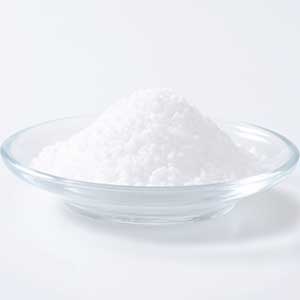
News
ное. . 06, 2024 03:51 Back to list
Price Comparison of Micronutrient Fertilizers and Their Examples for Diverse Agriculture Needs
Understanding Micronutrient Fertilizers Examples and Pricing
In the realm of agriculture, micronutrients are essential for optimal plant growth, development, and productivity. While macronutrients like nitrogen, phosphorus, and potassium are often the focus of fertilizers, micronutrients, including iron, manganese, zinc, copper, boron, and molybdenum, play a crucial role in various biochemical processes within plants. The right balance of these nutrients can significantly enhance crop yields and quality.
What are Micronutrient Fertilizers?
Micronutrient fertilizers are fertilizers that provide essential trace elements that plants need in smaller amounts to thrive. These nutrients are involved in functions such as photosynthesis, enzyme activation, and hormone production. A deficiency in any of these micronutrients can lead to various plant disorders and reduced agricultural productivity. Therefore, applying the proper micronutrient fertilizers is vital for farmers aiming for high-quality crops and sustainable farming practices.
Common Examples of Micronutrient Fertilizers
Several types of micronutrient fertilizers are available in the market, each serving different purposes based on the nutrient requirements of the crops.
1. Zinc Sulfate This is one of the most common sources of zinc. It is usually applied to soils that are deficient in zinc, especially in crops like wheat and corn. Zinc is vital for chlorophyll production and enzyme function.
2. Iron Chelates Iron deficiency, often resulting in poor crop performance and yellowing of leaves (chlorosis), can be addressed with iron chelate fertilizers. These products protect iron from oxidation and make it more available to plants. Common forms include EDTA (Ethylenediaminetetraacetic acid) and EDDHA (Ethylene diamine-N,N'-bis(hydroxyphenylacetic acid)).
3. Manganese Oxide Manganese is crucial for photosynthesis and various enzyme activities. Manganese oxide fertilizers are often used to combat deficiencies in soils with high pH levels.
4. Boric Acid This is the primary source of boron for crops. Boron plays a critical role in flowering and fruit set. It is often applied to fruit trees and crops sensitive to boron levels.
5. Copper Sulfate Copper is an essential micronutrient involved in photosynthesis and respiration. Copper sulfate is commonly used in crops where copper deficiency is noted.
micronutrient fertilizer examples price

Pricing of Micronutrient Fertilizers
The pricing of micronutrient fertilizers can vary significantly based on several factors, including the type of micronutrient, formulation (liquid vs. granular), and region of production. Here are some general price ranges and considerations
- Zinc Sulfate This can range from $0.50 to $1.50 per pound, depending on the supplier and form (granular or solution). - Iron Chelates Prices for iron chelates typically range from $2.00 to $15.00 per pound. The price is influenced by the stability and type of chelate used.
- Manganese Oxide Generally, manganese oxide costs between $1.00 and $3.00 per pound.
- Boric Acid The price for boron sources like boric acid can vary from $1.50 to $5.00 per pound, depending on formulation and purity.
- Copper Sulfate Copper sulfate usually costs between $0.75 and $2.50 per pound.
Factors Influencing Prices
Several factors can influence the pricing of micronutrient fertilizers 1. Supply Chain Constraints Transportation costs and regulatory issues can impact fertilizer availability and prices. 2. Global Demand Fluctuations in agricultural practices and crop demands can significantly impact fertilizer pricing. For instance, during farming season, demand may surge, resulting in higher prices. 3. Market Competition The number of suppliers and competition in the market can result in price variations.
Conclusion
Micronutrient fertilizers are crucial to modern agricultural practices, ensuring crops receive the right balance of nutrients for optimal growth. While prices can vary based on multiple factors, understanding the significance of each micronutrient and its role in plant health can help farmers make informed decisions on their fertilization strategies. By investing in micronutrient fertilizers, farmers can enhance their crop quality and yields, contributing to sustainable agricultural practices and food security.
-
Polyaspartic Acid Salts in Agricultural Fertilizers: A Sustainable Solution
NewsJul.21,2025
-
OEM Chelating Agent Preservative Supplier & Manufacturer High-Quality Customized Solutions
NewsJul.08,2025
-
OEM Potassium Chelating Agent Manufacturer - Custom Potassium Oxalate & Citrate Solutions
NewsJul.08,2025
-
OEM Pentasodium DTPA Chelating Agent Supplier & Manufacturer High Purity & Cost-Effective Solutions
NewsJul.08,2025
-
High-Efficiency Chelated Trace Elements Fertilizer Bulk Supplier & Manufacturer Quotes
NewsJul.07,2025
-
High Quality K Formation for a Chelating Agent – Reliable Manufacturer & Supplier
NewsJul.07,2025
